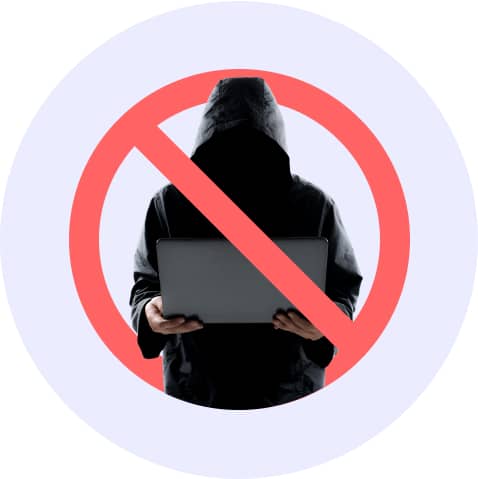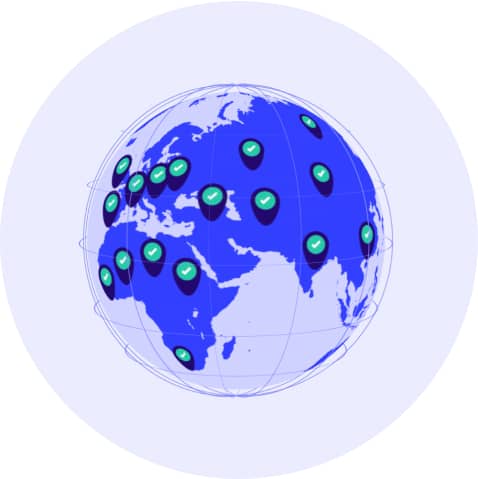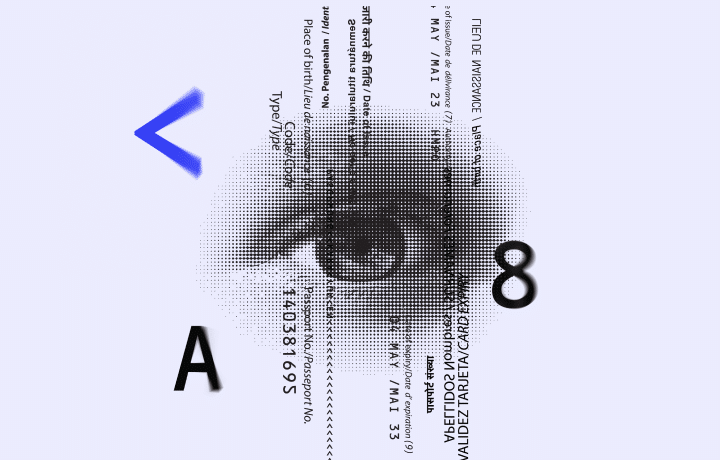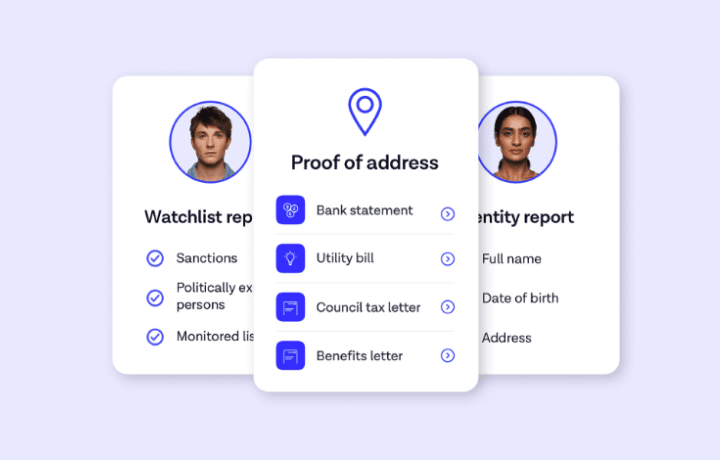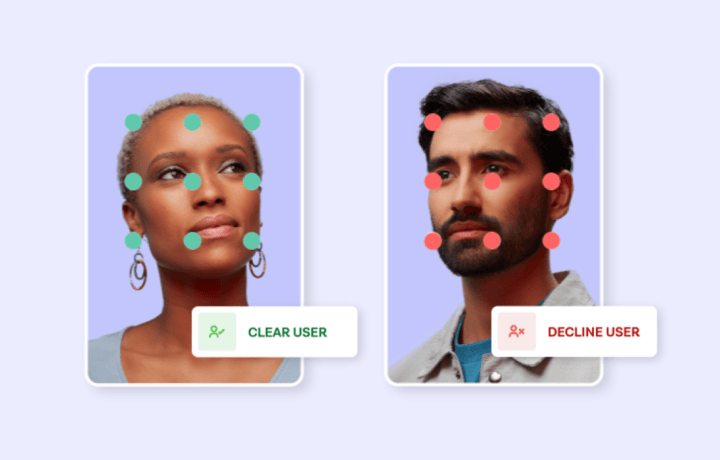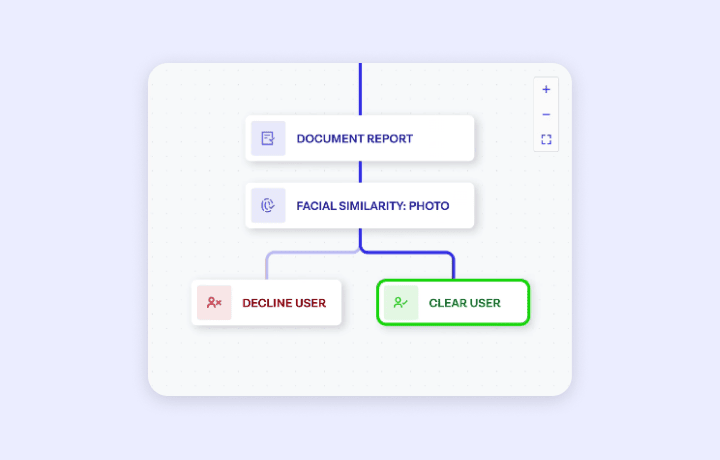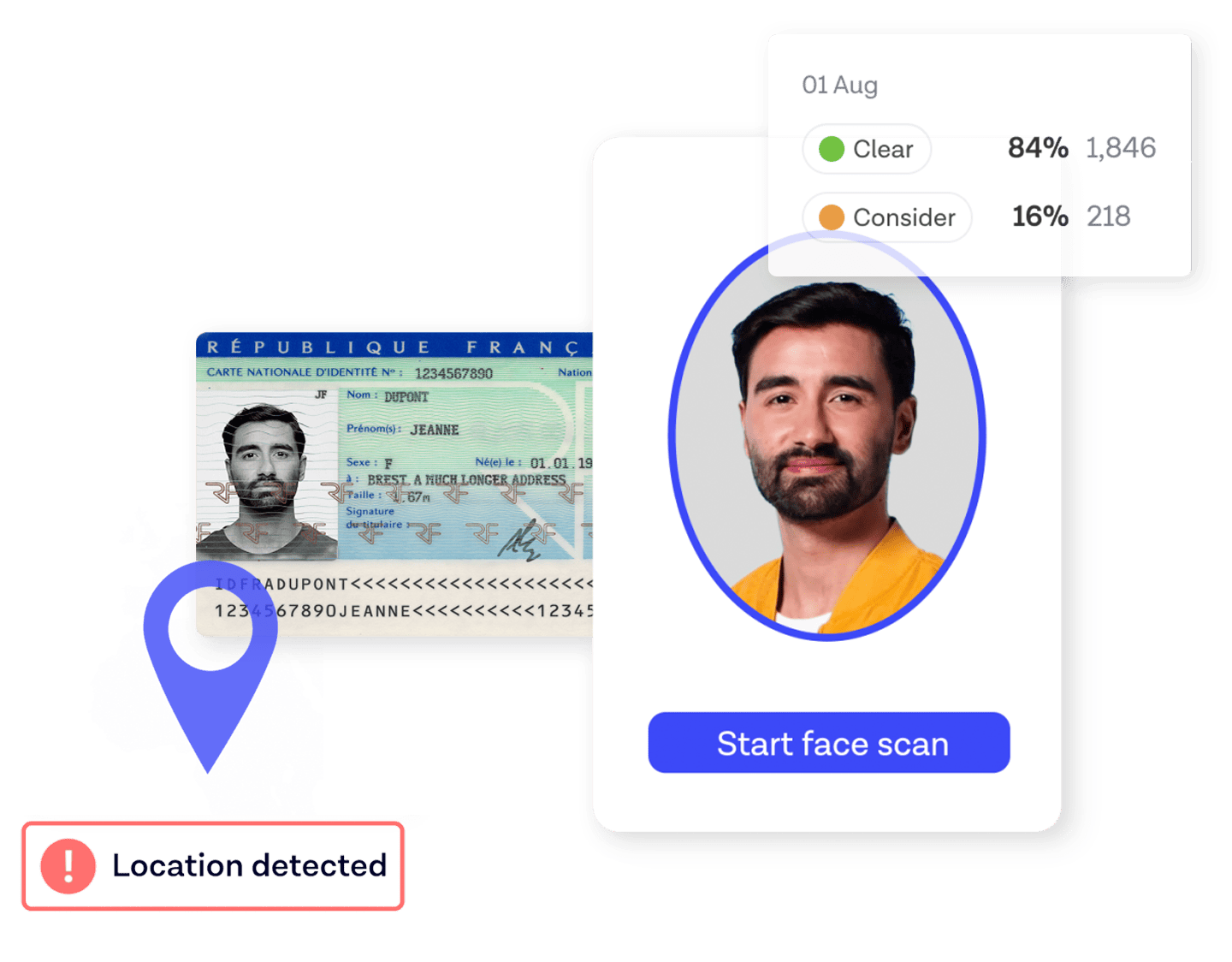
Fraud Detection
Fraud is a moving target. You need fraud prevention that adapts to your needs. Create a 360-degree view of customer identity with our fraud detection signals. Powerful device intelligence and AI-powered repeat fraud detection technology adapt to the real fraud you’re seeing in the world and stop it in its tracks, helping you to prevent fraud without impacting user experience.
Fraud detection that evolves with the fraudsters
Protect your business from synthetic fraud, deep fakes, and organized fraud rings with Onfido’s suite of adaptive fraud detection signals. Identify suspicious devices, repeated information, and known faces in a single solution — and customize logic to step-up verification if needed.
Onfido’s Fraud Detection Signals
Reduction in residual fraud
Known Faces detected
Micro-models powering our AI
Device Intelligence
Does this device look suspicious? Make your user journey work for you. Device Intelligence leverages signals such as geolocation, network information, and emulator detection, collected by the Onfido Smart Capture SDKs throughout your verification journey, to detect suspicious behavior without asking the user to submit additional information.
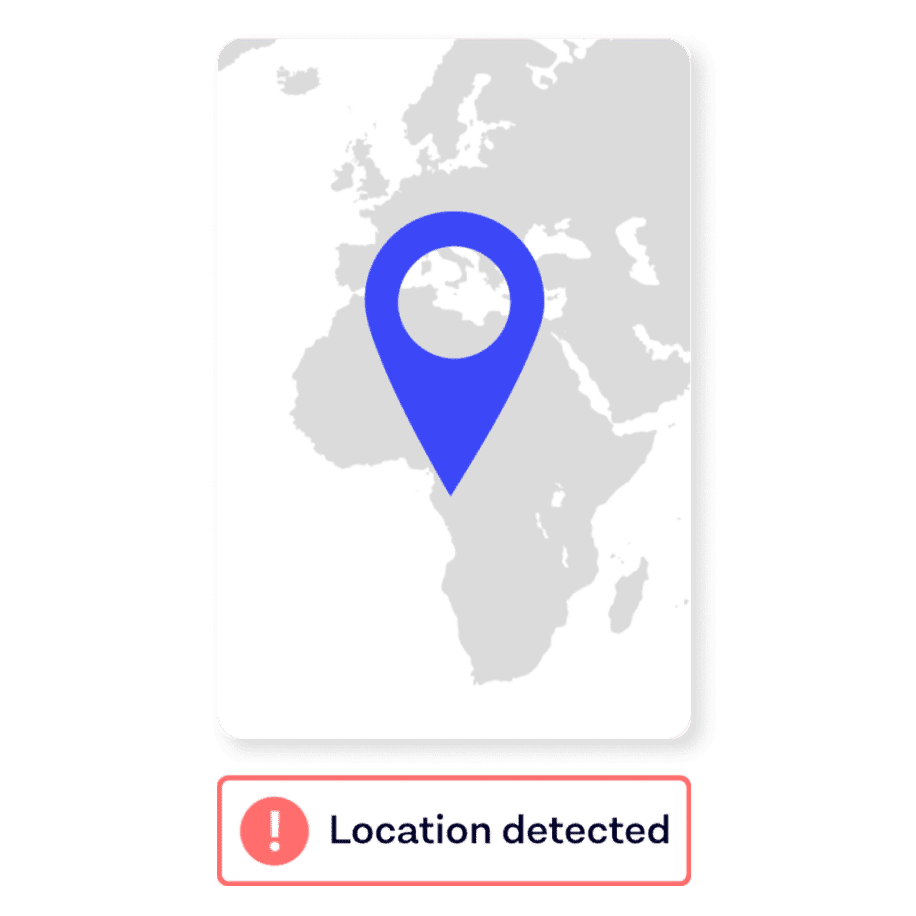
Repeat Attempts
Have I seen this document before? Protect your business from synthetic identity fraud and organized fraud rings through Repeat Attempts detection for documents. Onfido’s AI doesn’t just look at the user you’re onboarding right now, it looks back in time to detect if a document has previously been onboarded by your company, even if PII attributes have been altered, giving you fraud prevention that gets better with each verification.
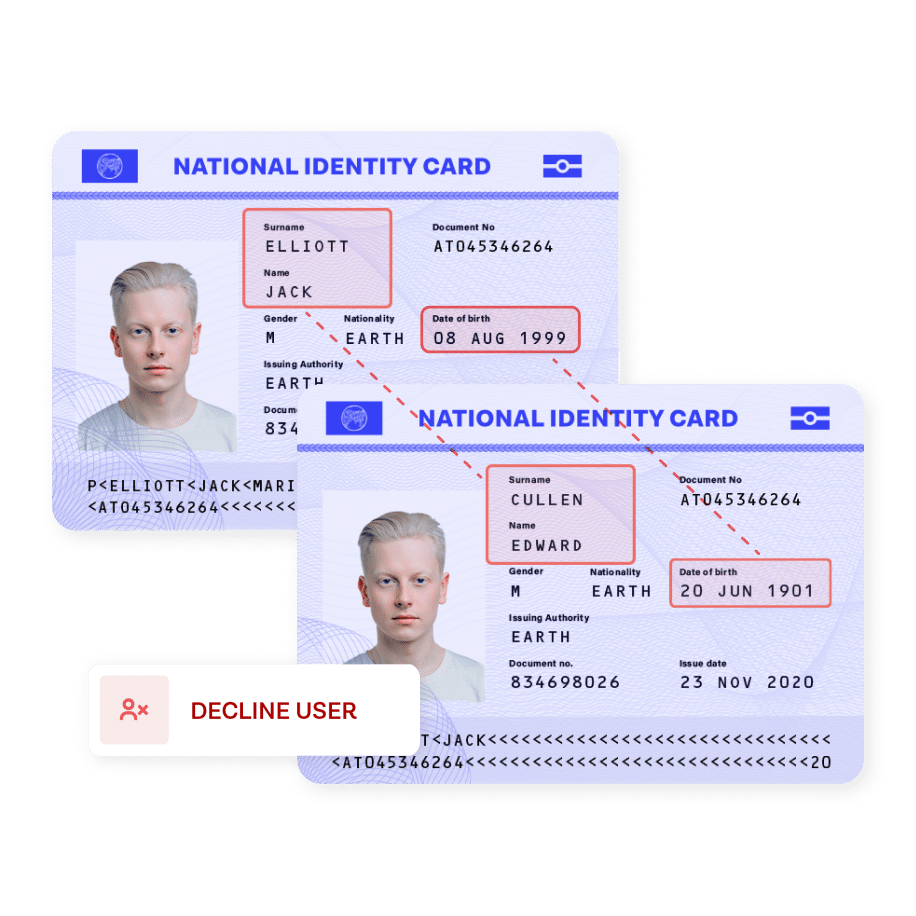
Known Faces
Have I seen these facial biometrics before? Add another layer of defense against sophisticated synthetic fraud with Known Faces. Assess facial biometrics and compare them with previously onboarded customers to detect duplicates, even if they have been altered through techniques such as facial morphing.
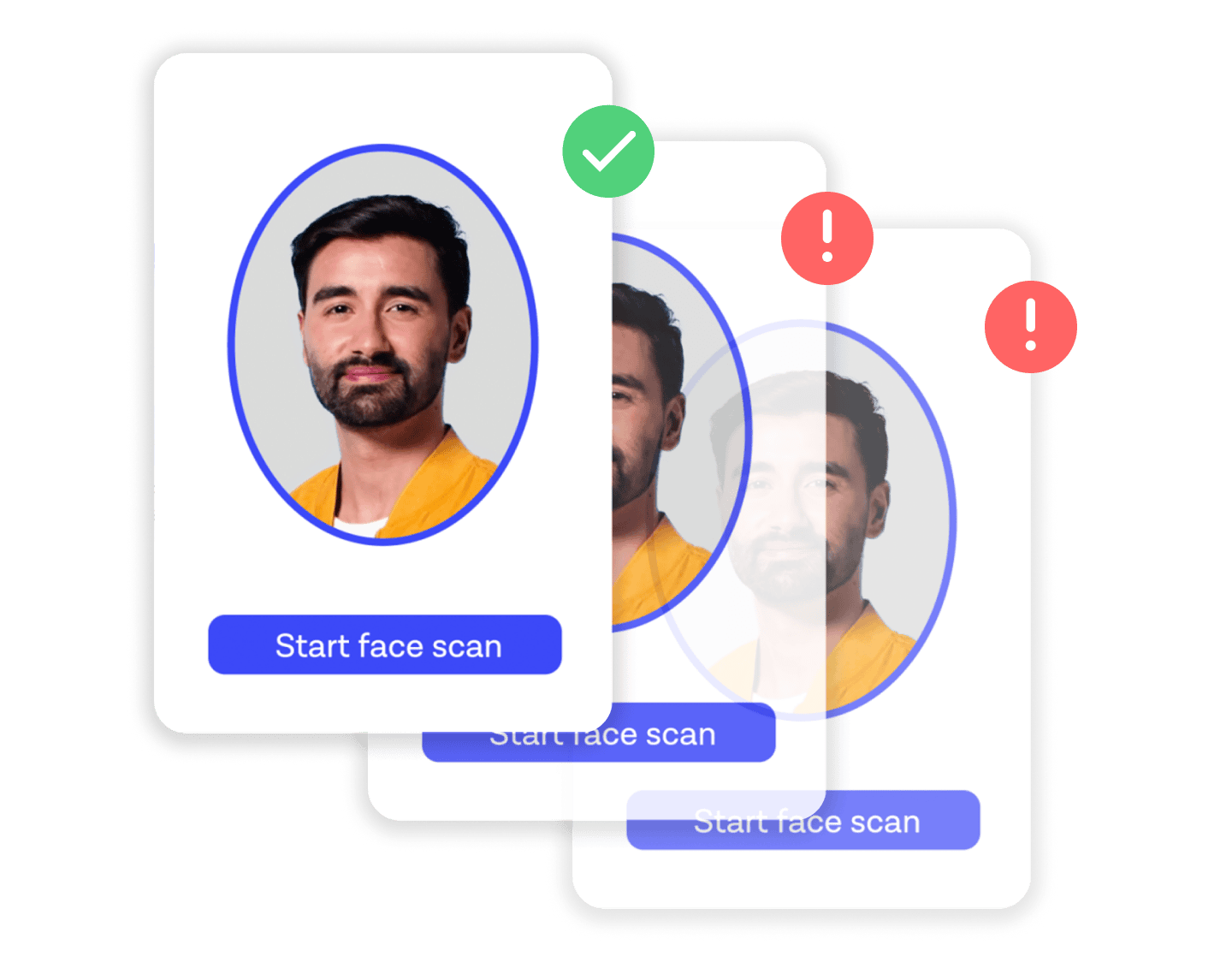
Explore the Real Identity Platform
Think like a fraudster
The findings from our Identity Fraud Report 2024 are in. What’s the verdict? Fraudsters are going digital, from document manipulation to deepfakes. Read the report for more fraud trends, insights, and techniques to help keep fraudsters out from day one.
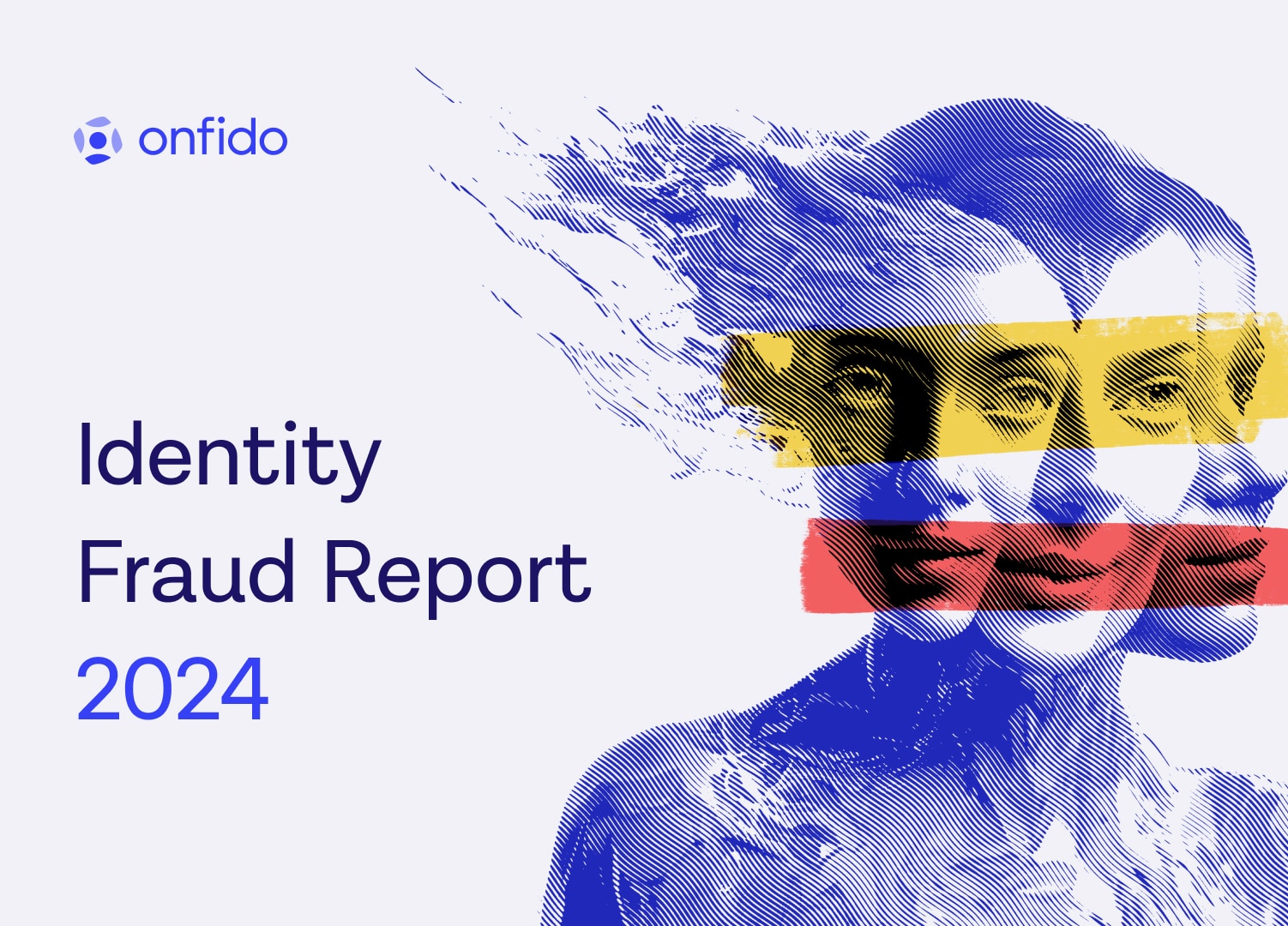
FAQs
Fraud detection is the process of finding deception. Fraudsters are the people attempting to defraud or deceive others for the purpose of financial or personal gain. Identity fraud is constantly evolving and so must fraud detection techniques and technology. Don’t let your business fall behind. Discover digital identity verification that’s as advanced as the fraudsters. Identity fraud is a major threat to any business. It’s a risk to revenue and to customer trust alike.
Since the digital revolution, identity fraud has evolved. It’s now the fastest-growing crime, as fraudsters can mount attacks and share techniques more quickly than ever. But the right online identity verification solution can defend against this risk.
Smart identity checks — ranging from passive signals at the start of the customer journey through to secure document and biometric verification for higher risk profiles — can identify fraud before it enters your platform and impacts your revenue.
Fraud detection algorithms are designed to catch fraud faster and more accurately than any human ever could. But fraud doesn’t stand still — so neither should fraud detection solutions.
Fraud detection models require up-to-date expertise and fast adaption to new attacks. A static approach leaves businesses vulnerable to new and emerging threats. The most dangerous type of fraud is the fraud you haven’t seen yet.
Onfido’s fraud detection models are powered by Atlas™ AI — our in-house AI built from the ground up over the last 10 years by a team of 200+ engineers and researchers. It’s made of thousands of micro-models that are trained to look for even the slightest shifts in color, texture, shape, and specific fraud signals on individual documents.
Atlas is expertly trained to recognise what fraudulent and genuine documents look like. This means it’s able to spot known fraud attacks with precision, reducing missed fraud cases by 54% compared with machine learning approaches trained only to spot fraud they’ve seen before. Training Atlas on genuine documents as well as fraudulent documents means that when new attack vectors arise, we accurately detect anomalies and retrain the models in days, not months, empowering you to react quickly.
We’ve also created our own Fraud Lab to ensure that we’re improving our product against the latest fraud trends and techniques. Using our rich datasets and proprietary technology, we train our models using the best insights available, to protect your business today and in the future.
There is no one-size-fits all approach to detecting fraud. Every business case is different, and there are many different types of fraud.
A successful fraud detection solution should incorporate several different layers of protection. Establishing a user’s identity at onboarding using either document verification, or biometric verification, or a combination of both is one line of defence. Passive fraud detection signals such as device intelligence are another, and data verification can help reinforce checks. It’s by looking at all this information as a whole, that businesses have the best chance of detecting fraud.
Fraud can be detected using a range of methods. Traditionally, businesses relied on human intervention to spot signs of fraud, such as checking for counterfeit or forged identity documents. But as many of our processes have moved online, fraud detection has advanced.
Today, businesses rely on artificial intelligence (AI) and data analysis to detect fraud. Specialist AI is trained to detect anomalies across identity documents during document verification and signs of biometric fraud during biometric verification. Combining data signals and document and biometric verification is one of the most effective fraud detection methods.
Fraud detection is important for several reasons. Firstly, it helps protect a business’s bottom line. If fraudsters slip through your defenses, they are likely to take full advantage of your services, which can mean significant monetary losses. Fraud detection can also help prevent chargebacks. If your customer becomes a victim of fraud, you are subject to costs such as chargebacks which impact revenue.
Robust fraud detection helps to protect your business reputation and customer satisfaction. By keeping your customers safe, they are more likely to remain loyal customers.

